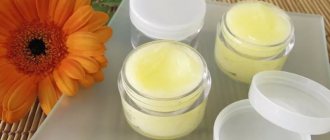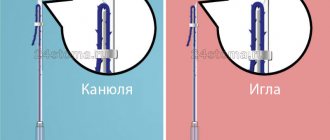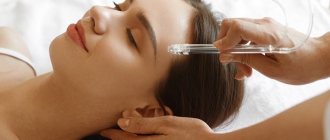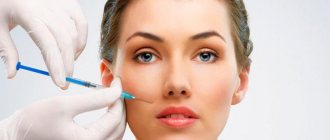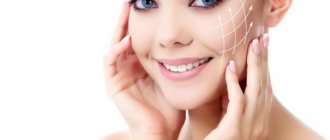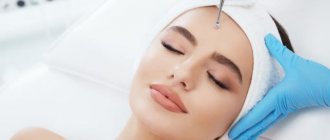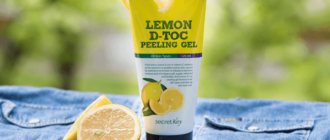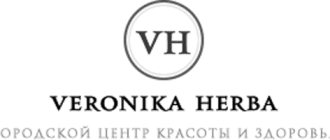What is facial oxygen therapy?
Very often, technologies are used in cosmetology, which ultimately turn out to be more of a marketing ploy than an effective treatment.
Oxygen facial treatment is a special technique that is becoming more popular every day, but at the same time there are more and more questions about the effectiveness of this method, due to a lack of scientific evidence and due to the growing awareness of the connection between cell damage from free radicals and oxygen radicals
Therefore, we may need to discuss the advantages and disadvantages of this technology.
BBL: rays of goodness
View this post on Instagram
Publication from Beauty Salon Moscow 10.-21.00 (@studiykrasoti) January 21, 2021 at 9:55 PST
BBL photorejuvenation on the Joule Sciton platform is the best procedure that improves the quality of the skin, rejuvenates it at the genetic level and solves the problems of pigmentation, rosacea and rosacea (visible blood vessels). The BBL high-intensity broadband light system warms up the dermis, which gives an instant lifting effect! This is the only photorejuvenation system with a proven protocol for influencing genes. The BBL broadband light system awakens more than 1000 dormant genes that are responsible for regeneration, immunity, metabolism and youthful skin.
Anna, 28 years old: “Before, tanning without SPF was something common for me. But recently, after returning from a beach holiday, I noticed how much my skin had suffered: a couple of barely noticeable (but still!) pigment spots, small wrinkles around the eyes... My cosmetologist’s solution: a BBL course. After five sessions, my skin seemed to wake up. Freshness returned, I felt that it was elastic, and my complexion was even and healthy. By the way, the wrinkles have also smoothed out.”
How oxygen therapy works
Oxygen therapy in the beauty industry is the use of medical oxygen as a means of “delivery” of active ingredients to the skin. The method is also used as a facial cleanser instead of traditional treatments. Cosmetologists also often talk about the rejuvenating ability of oxygen.
In some cases, an oxygen facial is incorrectly called “hyperbaric oxygen therapy,” but it is a completely different procedure.
Oxygen under high pressure is supplied directly to the surface of the skin, and the serum of active nutrients or vitamins is introduced into the oxygen flow, and due to the high pressure, it is “delivered” through the protective surface of the skin into the lower layers of the epidermis.
The key function of oxygen here is to increase its absorption of active ingredients and deliver this “cocktail” to the deep layers of the skin, mainly using iontophoresis or phonophoresis. The components contained in the oxygen flow have a beneficial effect due to their own beneficial properties.
To enhance the effect of therapeutic formulations, moisturizing components such as hyaluronic acid can be added.
The popularity of oxygen therapy (especially in the USA) was achieved due to the effect of instant smoothing and improving the tone of the skin surface.
This is the effect
- hides any tiny imperfections
- providing good skin color when necessary for public appearances and shows, and oxygen therapy here does the work of a makeup artist and the effect of the procedure can last up to 48 hours.
A course of treatment that brings good results usually lasts for six weeks, with the procedure once a week, and after the course a maintenance procedure - another 1 time a month. The price in the USA is $200 per procedure, the price in Russia is less, from 1500 rubles per session
Due to its rapid action, oxygen therapy has gained popularity among television and pop celebrities. For example, Madonna is a regular user of oxygen facials, and according to her website, she has her own oxygen therapy recipe, the “facialist.”
Many other celebrities are increasingly promoting this type of facial treatment, which is why oxygen therapy is increasing in popularity. At equipment shows in the United States, there are no less than eleven different brands of oxygen facials, each unique in its own way.
Summing up
According to reviews from my clients who completed a course of 3-5 procedures, the combination of oxygen with meso-cocktails can really quickly rejuvenate the skin. Moreover, if you use high-quality oxygen cosmetics at home in between sessions, you can maintain the results for up to one and a half years. Of course, with aging skin it will last less, but at least for six months.
The price for one session in metropolitan clinics starts from 3,000 rubles, in small cities - almost half that. The recommended course duration is 3-5 procedures with an interval of 10-14 days. Oxygen rejuvenation can be alternated with microcurrents, fractional laser, vacuum or manual massage. Preliminary ultrasonic cleaning will significantly enhance the result.
Hardware
But no matter what manufacturers claim, the devices used in oxygen therapy are relatively simple, consisting of an oxygen generator/storage tank, a pressure regulator and a nebulizer.
Oxygen, which cleanses the skin well, is produced in the same way as oxygen for oxygen cocktails, usually using a technology called Pressure Swing Absorption (PSA), which produces concentrated oxygen (90-95%) from atmospheric air, because usually air only contains 21% oxygen.
Interestingly, most oxygen spray guns look similar to the spray guns used by airbrush artists, with the only difference being that they use oxygen instead of compressed air.
Advantages of the method
- There is no need for injections.
- Quick recovery period: after the session there are no bruises, papules or swelling.
- The procedure is painless and even in some way a pleasant manipulation, because... There is a kind of massage with a stream of oxygen.
- Fewer contraindications compared to injection therapy.
Watch the video from which you will learn how oxygen mesotherapy is carried out and what stages it consists of:
But does it work?
The mild inflammatory reaction of the skin, caused by the forced disruption of the epidermal lipid bilayer, is the most logical reason why an instant smoothing and toning effect is achieved. But there is no scientific evidence that cosmetic formulations reach the target area at the dermal/epidermal junction.
Besides the immediate effects of mild inflammation, there is of course the possibility that there could be restructuring of the collagen matrix due to stimulated fibroblast activity (caused by the inflammatory response). But since the level of fibroblast stimulation is directly proportional to the level of inflammatory response created, it can be concluded that the effect will be less than with chemical peeling or microdermabrasion.
The idea that oxygen used during facials actually provides therapeutic benefits only from topical application, and the assumption that we can increase energy in skin cells by topical oxygen application is false for a number of reasons:
1) Human skin cannot “breathe” very much, that is, in fact, the skin does not require excess oxygen other than that received through the lungs when breathing.
2) The protective surface of the skin has strong waterproof resistance, even to pressurized oxygen jets
Although the skin can absorb useful components (for example, components of masks and creams penetrate through the skin), it does not absorb substances that are important for the vital function of the entire body.
Marketers of oxygen therapy often refer to the proven effectiveness of oxygen on damaged tissue, citing reductions in inflammatory cytokines, increases in growth factors, and antibacterial effects.
And there is some truth in such statements, since oxygen has been successfully used for over fifty years to heal wounds, but this method, however, increased the concentration of oxygen in the cells through the pulmonary vascular system, that is, from the inside, and not by external contact of the wound with oxygen.
Doctor of Medical Sciences, Professor of the Department of Phthisiology and Pulmonology of the Medical Faculty of Moscow State Medical University, Sergey Lvovich Babak
Degree of oxygen deficiency relative to saturation (SpO2) - pulse oximeter readings
| Degree | SpO2,% (pulse oximetry readings) |
| Norm | more than or equal to 95% |
| 1st degree | 90-94% |
| 2nd degree | 75-89% |
| 3rd degree | less than 75% |
| Hypoxemic coma | less than 60% |
*Recommendations, the required oxygen flow, the regimen and duration of oxygen therapy for COPD are prescribed by the attending physician! Oxygen therapy at home is carried out using oxygen concentrators under the control of pulse oximeter readings.
— My name is Babak Sergey Lvovich. I am a professor at the Department of Phthisiology and Pulmonology of the Medical Faculty of Moscow State University of Medicine A.I. Evdokimov. I have several questions that I would like to devote the remaining time to. The role of oxygen in human daily life. The fact is that those mechanisms that we usually evaluate as oxidative are impossible without oxygen. Life is built around oxygen.
It exists in different forms. There are concepts of atomic oxygen, and there are concepts of molecular oxygen. The most curious thing is that molecular oxygen in the air in the lungs turns into atomic oxygen, which penetrates the blood and delivers it to the muscles. And already inside the muscles, it actively participates in the craps chain, allowing the body to receive the necessary proteins, fats, carbohydrates and nutrients by oxidizing products entering the body with food, water, liquids, and so on. Therefore, this delivery of oxygen by the lungs to the blood performs the function of gas exchange.
This is the most important function, and in short, why we breathe. We breathe only to maintain the constancy of atomic oxygen inside our body. The human lungs are adapted to inhale air at a pressure of one atmosphere containing 21% oxygen, almost 80% nitrogen and not containing any additional other impurities in the form of smoke, in the form of solid particles, and so on. But having a humidity of no higher than 60% at a temperature of about 22 degrees.
There are so many conditions necessary for the lungs in order to transform molecular oxygen into atomic oxygen and create a constant saturation of arterial blood with oxygen. If a person, for example, smokes or inhales some dust particles, or some other impurity components in the air, then the lungs react very harshly to this and do not allow such people to have an adequate level of arterial blood oxygen saturation. That is, it seems to be fighting to ensure that we still breathe the freshest air without pathogenic impurities or foreign particles. The second very important component that should be discussed when we talk about the role of oxygen in daily human life concerns environmental humidity and temperature.
The fact is that humans are adapted to live and survive in different climatic conditions. In conditions of very high humidity, in conditions of low humidity, in conditions of cold temperatures, in conditions of very hot temperatures. In fact, this is a unique creature with a high adaptive reserve. Almost all pulmonary diseases can be accompanied by the development of respiratory failure.
The essence of respiratory failure comes down to the fact that there is a discrepancy between the need for oxygen and the ability to deliver oxygen to the arterial blood. The partial tension of arterial blood with oxygen is less than 55 ml of mercury or an increase in the partial tension of carbon dioxide in the arterial blood is above 45 ml of mercury. These two parameters indicate that a person has experienced some degree of respiratory failure.
To our joy, there is an indirect method, but it is quite accurate, by which we can also find out what the degree of respiratory failure is. This method is called pulse oximetry. Pulse oximetry reflects the saturation of arterial blood with oxygen in the degree of saturation. This degree can also suggest the degree of respiratory failure, for example, arterial blood oxygen saturation in the range from 90 to 93% corresponds to a partial blood oxygen tension of 60 to 80 ml of mercury. Which corresponds to zero degree of respiratory failure.
The parameter of reducing blood saturation to 85% will correspond to the first degree of respiratory failure or a reduction to the level of 50 ml of mercury. A parameter of up to 80% blood saturation usually corresponds to the second degree of respiratory failure and 75% below blood oxygen saturation corresponds to the third degree of respiratory failure. It is believed that no matter how the patient feels, the degree of saturation of arterial blood with oxygen
should not be below 90% arterial blood oxygen saturation. The disease will proceed differently in a person if his arterial blood oxygen saturation is below 90%, that is, a certain degree of respiratory failure will occur.
What diseases are usually accompanied by respiratory failure? First of all, obstructive pulmonary diseases. These include bronchial asthma, they include obstructive bronchitis, they include chronic obstructive pulmonary disease, they include bronchiectasis, they include cystic fibrosis. How common is respiratory failure in the population?
It is impossible to give a direct answer here. Because we are talking about the prevalence of the disease, not the prevalence of the syndrome. Respiratory failure is a syndrome and it is quite difficult to separately calculate the prevalence of the syndrome. If we are talking about the comparison of diseases in which respiratory failure can occur, then this is almost 80% of all pulmonary diseases we encounter among the human population.
Therefore, we can say that the data is extrapolated from the given blood. To say that respiratory failure is a common phenomenon in obstructive pulmonary diseases. What underlies the development of respiratory failure? Primarily there are two main mechanisms. The mechanism of narrowing of the bronchi and the impossibility of bleeding out air containing 21% oxygen and the second mechanism is very important, this is the impossibility of oxygen penetrating through the alveolar membranes.
Here are the two main components influencing the development of respiratory failure. Therefore, we divide it into two different types that occur with obstructive pulmonary diseases, which occur with interstitial lesions of the lung tissue. Let's try to decipher the obstructive component of the development of respiratory failure. What is this connected with? First of all, it is due to the fact that in a number of diseases there is a narrowing of the lumen of the bronchial tree, a narrowing of the lumen of the bronchial tubes.
It's caused by bronchospasm, it's caused by swelling, mucus buildup. These three mechanisms lead to a narrowing of the lumen and the impossibility of air entering the respiratory tract. Therefore, even under normal conditions, when there is enough oxygen in the air to ensure the gas exchange function, it physically cannot penetrate the lower part of the respiratory system and saturate the blood with oxygen. Due to the fact that the development of certain respiratory volumes necessary to maintain the gas exchange function is not achieved.
The second situation is completely different; it is associated with intersocial lesions of the lung tissue. When tidal volume is reduced due to compression of the lung. The lung seems to be compressed a little on one side, and on the other side the membranes thicken and oxygen, at a pressure of one atmosphere, cannot penetrate through the membranes and penetrates worse than it should penetrate, cannot adequately saturate the arterial blood with oxygen. In both cases, increasing the concentration of the oxygen mixture supplied to the lungs leads to a very interesting effect.
Oxygen penetrates into the blood at a higher rate and practically the person loses respiratory failure. Therefore, we are talking specifically about devices in this case that are capable of creating an increased concentration of oxygen in the exhaled mixture; they are called an oxygen concentrator. A separate category is respiratory failure caused not by the oxygen component, but by the accumulation of carbon dioxide, it is called hypercapnic respiratory failure.
The first type of respiratory failure that we talked about before is called hypoxemic or hypoxic respiratory failure, where oxygen does not penetrate into the blood, low concentrations. And the second type of respiratory failure is called hypercapnic, associated with the accumulation of carbon dioxide. The culprit of the protogynesis of the development of this type of respiratory failure is precisely the respiratory muscle. A person cannot physically create an excursion adequate to the need for air oxygen to penetrate the respiratory tract.
This is usually associated with neuromuscular diseases, very often associated with obesity or with damage to the skeletal structure of the chest. Also plays an important role in the expansion of the lungs. How does respiratory failure manifest itself clinically? First of all, a person feels a feeling of lack of air, which has an organic name - shortness of breath. Shortness of breath occurs at rest, shortness of breath occurs during physical activity, so we grade this shortness of breath on a certain scale. We assign a point score, the higher the score, the more severe the person’s shortness of breath
In total, the scale provides four points, starting from two points, shortness of breath is chronic and is a reason to seriously think about the causes of such shortness of breath. Clinical shortness of breath manifests itself, if you look at such a patient with shortness of breath, you will see that there is usually bluish skin, blue lips, and often puffs.
True, in some diseases , chronic obstructive pulmonary diseases, in which shortness of breath is very characteristic, we even distinguish two different phenotypes of such a disease. One phenotype is called pink puffing patients, and the other is called blue panting patients. The pink ones that puff are called Pinkpuffers, and the blue ones that pant are called Blue Blowers.
So, Blue Blowers usually have a hypoxemic type of respiratory failure, they are cyanotic, the air supply is very useful for them. Pink-puffing patients more often have a hypercapnic type of respiratory failure with CO2 accumulation and oxygen in this case is not very useful. But on the contrary, it is necessary to have ways to strengthen the disabling part. That is, by changing the ventilation of the lungs in order to flush out CO2 in such patients, since the accumulation of oxygen in the blood causes an increase in the level of CO2 in the blood.
Frequency and seasonality of diseases causing respiratory failure. If we talk about the frequency and seasonality of these diseases, then, in my opinion, these diseases should still be divided into two main categories: obstructive diseases and restrictive diseases with damage to the lungs. If we are talking about the obstructiveness of the disease, then of course, first of all, they are associated with changes in humidity and ambient temperature.
Since this leads to the fact that sputum can swell in the lumen of the bronchus and clog small bronchi, this causes disturbances in the flow of air through the bronchial tree. Therefore, patients usually have chronic obstructive bronchitis twice a year. COPD has this type of exacerbation associated with climate change. A very important component influencing the frequency of exacerbations is continued smoking; such patients have obstructive diseases.
Regular inhalations of toxic gases and fumes support very pronounced inflammation in the respiratory tract and it overlaps with the course of treatment of the disease itself, causing an increase in the frequency of exacerbations. In this case of exacerbation of the disease, there is a sharp increase in shortness of breath, an increase in the secretion of sputum mucus more than usual, this causes the patient to begin to choke and experience varying degrees of respiratory failure.
With which he usually comes to our hospital or is subject to treatment at home. Seasonality in this case is not as important as maintaining those factors that can maintain inflammation of the respiratory tract. The situation is completely different with such an obstructive disease as bronchial asthma. This is a separate category of patients who are usually allergic and have hay fever, and at the moment of flowering of herbs, plants and flora, to which they react very sharply, they experience an exacerbation of bronchial asthma.
Exacerbations are associated specifically with the allergic component, and much attention is paid to the concept of a hypoallergenic regime in patients with asthma, maintaining this and combating hay fever or a reaction to flowering plants, all kinds of herbs, trees, and so on. If we are talking about restrictive diseases, such as pulmonary fibrosis, then they have neither frequency nor seasonality of exacerbation, the process is associated with something else.
The process is often associated with an additional infection, which the patient can get due to a cold or a viral infection. We are essentially talking about pneumonia, pneumonia. Pneumonia in such patients is very severe and very often patients are tormented by destructive diseases; when they get pneumonia, they get a very pronounced degree of respiratory failure. And they literally die from lack of oxygen in the arterial blood.
It must be said that oxygen is a medicine. Like every medicine, it must be considered as a kind of poison, which is given little by little under certain conditions. Since the principle of doing no harm should work in this case too. You can’t just breathe in a certain volume or flow of oxygen. In this way, you can seriously disrupt the humidity of the respiratory tract and disrupt the structure of the respiratory tract, causing yourself serious harm. Oxygen is a powerful oxidizing agent. I would really like our listeners and viewers to remember that the ozone you are talking about: “It’s very good to breathe ozone.”
- This is a big deal! Tragic mistake! There are many people who specially ozonate the room, creating so-called three-molecular oxygen. They damage the pulmonary apparatus so severely that they can eventually die from severe damage to the lung tissue from ozone breathing. Therefore, any oxygen therapy requires clear, specific intervention from a doctor.
Flow intensity. What flow intensity should be set in order to achieve success in oxygen therapy?
The oxygen flow should be such that arterial oxygen saturation figures range from 90% to 95% arterial oxygen saturation. If you can achieve this flow of one and a half liters per minute, that is enough. There is no need to increase the flow to 2 liters, 3 liters, 4 liters. If 3 liters are needed for this, conditions must be created so that the patient receives 3 liters. Therefore, in each specific case, there is a titration or selection of the oxygen flow that creates normal blood oxygen saturation figures. It is believed that flows in excess of one and a half liters per minute are unsafe. That is, they require a special air humidification system, since they can dry out the respiratory tract. And it requires warming, because it will lead to cooling of the respiratory tract.
Let me give you a simple example. For example, cooling the respiratory tract by one degree, that is, 37.4 there becomes 36.4. This leads to a decrease in air humidity by 12%. A decrease of 12% actually dries out the mucus, it becomes in the form of crusts, these crusts will never leave the lower respiratory tract, and respiratory plugs form. Or we call it a mucus plug.
Therefore, it is very important that we properly deliver oxygen to the airways. Properly humidify and, if necessary, properly warm the delivered air so as not to cause hypothermia of the respiratory tract. You need to consult a specialist, a doctor first of all, who knows this technology. And set the parameters necessary for this type of treatment.
How to prescribe oxygen therapy, which patients to prescribe and how to choose the right level? There is a concept of diphomysioma test, if the diffusion of oxygen decreases, we see a significant decrease. That is, the percentage of blood becomes below 55 ml. mercury, then long-term oxygen therapy is indicated for such patients. What is the best way to titrate the level of such therapy? During titration, the oxyinter course is used, which allows one to accurately determine the oxygen flow that maintains normal levels of oxygen saturation in arterial blood.
The need for long-term therapy arises in all patients with respiratory failure starting from the second stage. Since at this stage the arterial blood oxygen tension decreases, usually below 55 ml. mercury column. In fact, these are all patients admitted to the hospital with exacerbation of chronic obstructive pulmonary disease, exacerbation of obstructive bronchitis or with severe attacks of bronchial asthma. They will need oxygen therapy.
If we are talking about the duration of such a maneuver, the duration of this technique, it is important to look at the life-sustaining technique and the technique carried out for some time. Naturally, if we expect that the patient’s respiratory function will be restored and gas exchange will be restored, then we will cancel such therapy.
Usually when therapy takes about two, three weeks of oxygen therapy. We carry out this therapy in the hospital and upon discharge the patients do not receive further oxygen. But a number of patients, especially with interstitial lung lesions with severe obstructive disorders, when it is impossible to replenish gas exchange, require lifelong use of this type of therapy.
And then they are forced to use oxygen concentrators at home. This is an important factor in prolonging the life of such patients. It has been studied and shown that the use of an oxygen concentrator at home prolongs the patient’s life by 15-20 years. This is significant for such patients, while the degree and risk of exacerbations are reduced by up to four times.
That is, if a patient has a minor exacerbation per year, using long-term oxygen therapy for virtually the entire year, he does not experience any serious exacerbations of disease requiring hospitalization or a change in the amount of drug therapy.
This is a significant contribution of the duration of oxygen therapy or oxygen therapy to the doctrine of treatment of patients with chronic respiratory failure. There are oxygen concentrators operating in the range from one liter to five liters per minute with a high output concentration. Creating conditions for good saturation of arterial blood with oxygen. They are expensive and the patient does not have the money to purchase such a device; he is limited to simple concentrators that either work unstably, with a low oxygen concentration at the outlet, or do not provide a flow of, say, five to three and a half, four liters per minute.
What does this lead to? It leads to the fact that the real oxygen concentration in the inhaled mixture drops to a very low value and is virtually no different from room air. And we know very well that the patient’s room air is not enough to relieve gas exchange disorders in such a patient. And respiratory failure progresses in such patients, despite the fact that they supposedly use oxygen concentrators in their lives and are treated with the help of concentrators. In this case, we suggest renting an oxygen concentrator; the cost of renting an oxygen concentrator starts from 6,000 rubles per month.
Therefore, it is the reliability, the percentage reliable benefit of oxygen, the wide variation of flows of oxygen devices that allows you to have some maneuver. In order to select for each patient, in each specific case, adequate, reliable oxygen therapy for a very long period of use. One of the companies that has legalized such a line is the Agmung company. Which adopted the doctrine of various oxygen concentrators for various treatment methods.
For example, there is a model line of concentrators for hospitals and home use, for example, where fairly high flows are combined with a very high concentration of the inhaled oxygen mixture.
| Atmung 3L-I (LFY-I-3A) | Atmung 03-C (LFY-I-3A-11) | Atmung 5L-H (LFY-I-5F-11) | Atmung 5L-F (LFY-I-5A-01) |
And there are oxygen concentrators for home use, small, portable, low noise, when the flow ranges from one to three liters per minute.
| Atmung Oxybar | Atmung Oxybar Auto | Armed 8F-1 | Armed 7F-1L |
I note that usually for home use, flows of more than one and a half liters per minute are not used. Therefore, oxygen supplied in a flow of even three liters per minute is twice the patient’s needs, which provides a guarantee of reliability and stability for such patients, even in emergency situations happened at home. It is important to understand that sometimes patients themselves must know how to behave correctly in the current situation. For example, with a feverish patient, he puts a thermometer or thermometer under the armpit or in the mouth and determines the temperature for himself, understands that with a temperature of 37. he behaves according to one, with a temperature of 38 for another, 39 for a third.
Question: — How should a patient with respiratory failure who is receiving long-term oxygen therapy behave correctly?
For this, there are the concepts of pulse oximeters, a small portable device located on the phalanx of the finger, and allowing to measure the saturation of arterial blood with oxygen. So, if the patient feels increasing shortness of breath without receiving oxygen, puts a pulse oximeter on the phalanx of the finger and sees that the pulse and oximetry indicators begin to decrease below 90%. This is a reason to reconsider the scope of such therapy, but in the presence or after consultation with your doctor who prescribed this type of long-term oxygen therapy.
If he feels some kind of ailment, some kind of weakness, fatigue, but pulse oximetry is maintained above 90% of arterial blood oxygen saturation, then there is no need to change the volume of such therapy. These symptoms are associated with another manifestation of the disease, for example, with not receiving a bronchodilator, receiving hormonal therapy, or impaired mucus drainage in the respiratory system, but are in no way associated with long-term oxygen therapy.
Such a simple method of monitoring well-being and blood oxygen saturation makes the patient confident in the regularity and reliability of this type of treatment.
How long does it take to supply oxygen to a person's respiratory tract?
Professor Ludo in the early 80s in France conducted a huge clinical study on a huge sample of patients and it was established. That with long-term oxygen therapy, it is necessary to supply oxygen to the respiratory tract twenty hours a day, at least twenty hours a day, so that respiratory failure undergoes correction.
At the same time, if we reduce the number of hours of oxygen therapy to 15 or less, then this is equivalent to as if we did not conduct such sessions of long-term oxygen therapy at all.
That is, the boundaries of behavior range from 15 to 24 hours a day. And the desired duration is twenty hours during which the patient breathes a certain concentration of oxygen to relieve any degree of respiratory failure.
What about “free radicals”?
Yes, there are also negative aspects to oxygen. We know that unstable oxygen molecules cause free radicals, and it is clear that oxygen is the “pipeline” for delivering free radicals to tissue. It is also known that oxygen is the most common oxidizing agent, and the oxidative process contributes to skin aging and the development of wrinkles.
Official FDA Approval
It is also interesting to note that the technology, which is very popular in the United States, has not been officially approved by the FDA!!! In the United States, oxygen therapy at concentrations above 90% is used only for medical reasons.
Then why don't manufacturers talk about positive therapeutic effects? And because, to declare them, would mean the need to provide evidence of effectiveness, after long clinical trials (with long-term results and certain contraindications), to obtain FDA certification, and these are obstacles to profit. A little-known fact, if oxygen is used in the USA without a medical purpose, this violates FDA regulations. Naturally, in Russia there is no such regulation.
Whether you need bio oxygen therapy or non-injection oxygen mesotherapy, it’s up to you, dear readers of Supercosmetologist!
Be sure to get professional advice!
Advantages and disadvantages of technology
Oxygen facial rejuvenation has a whole list of advantages:
- Almost complete absence of contraindications and unwanted side effects;
- Quickly obtain a visual effect and preserve it for a long time;
- The procedure is performed without pain or trauma to the skin.
A significant advantage of oxygen therapy is the ability to solve problems in a short time:
- Dull skin - correct its unhealthy shade;
- Flabbiness – the turgor of the epidermis increases;
- Fabrics wither - they fill with moisture;
- Puffiness and blueness under the eyes - dark circles and swelling disappear;
- Photoaging – pigment spots are removed;
- Wrinkles and acne – the skin is smoothed.
Oxygen rejuvenation technology cannot be carried out in the presence of acute viral skin lesions. Those with atopic dermatitis and rosacea should avoid exposure to oxygen. Ladies with sensitive skin should first consult a dermatologist. No other contraindications or any side effects were noted during the use of the technique.
